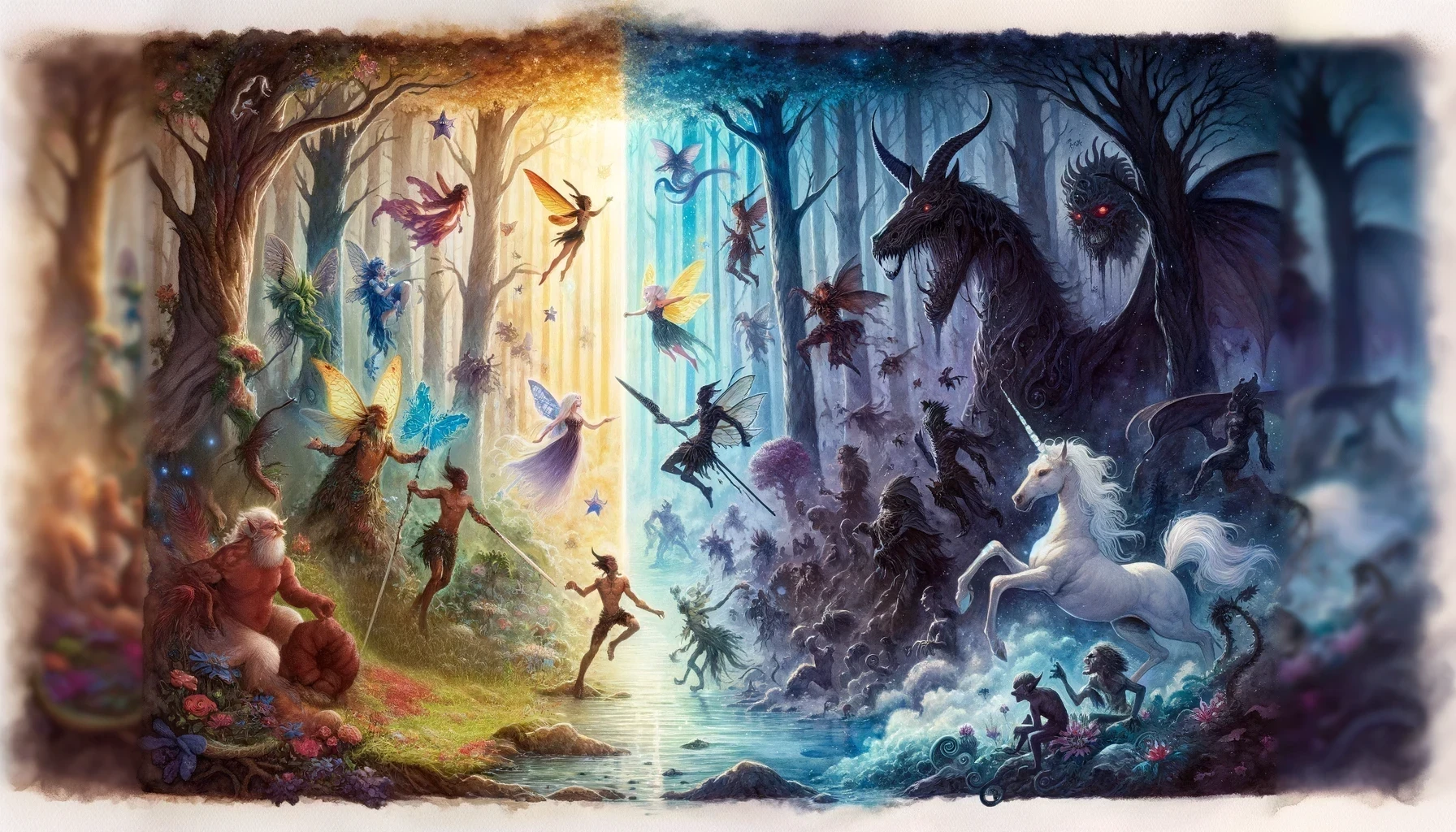top of page

The Clockwork Conspiracy
A busy steampunk cityscape scene



The Clockwork Conspiracy
A busy steampunk cityscape scene
1/4
D&D Area of Effect
Area of Effect (AoE) in D&D
-
AoE (Area of Effect): Spells or abilities that affect multiple targets within a designated area, rather than a single creature or point.
-
Burst: A type of AoE that radiates out from a single point of origin in all directions.
-
Cone: A type of AoE that starts at a specific point and expands out in a cone shape.
-
Cylinder: A type of AoE that affects a certain radius and extends to a specific height, forming a cylindrical area.
-
Emanation: A type of AoE that radiates out from the caster or an object in all directions.
-
Line: A type of AoE that affects a straight line extending from the caster.
-
Radius: The distance from the center of an AoE to its perimeter. It's used to determine the reach of effects like circles, bursts, and emanations.
-
Saving Throw: A mechanic used to resist or partially resist certain effects, often used in conjunction with AoE spells.
-
Spell Level: The power level of a spell, often determining the strength and size of the AoE.
-
Sphere: A type of AoE that affects an area in a sphere shape, expanding in all directions around a center point.
-
Spread: A type of AoE that can bend around corners and cover irregular shapes, radiating out from a point of origin.
-
Square: A type of AoE that affects a certain number of contiguous squares on the grid, usually forming a cube or rectangular prism.
-
Template: A physical or digital tool used to determine the exact area affected by an AoE spell.
-
Wall: A type of AoE that forms a barrier, either linear or enclosing a certain area, which can have various effects on those who cross it or start their turn inside or adjacent to it.
-
Zone: An AoE that persists for a duration of time, affecting creatures that enter or start their turn in the area.
Mastering the Art of Area of Effect as a Dungeon Master
As a Dungeon Master (DM) in Dungeons & Dragons, the artful use of Area of Effect (AoE) abilities can add depth and excitement to your encounters. These abilities aren't just tools for your players to unleash; they can be wielded strategically by you to create dynamic, challenging battles.
1. Understand Your Spells and Abilities
An intimate understanding of your monsters' AoE abilities is crucial. Each spell or ability comes with its unique pattern, whether it's a cone, a line, a sphere, or another shape. Understanding these patterns allows you to position your creatures optimally, using their abilities to maximum effect without harming their allies.
2. Environment Considerations
The environment can dramatically alter the effectiveness of AoE abilities. Utilize your terrain creatively. Narrow passages or bridges might restrict the player characters (PCs) from avoiding a Cone of Cold, while a monster's Erupting Earth could suddenly make the battlefield perilous and difficult to navigate.
3. Tactical Timing
Timing is key in D&D combat. Instead of opening with a powerful AoE spell, consider saving it for a dramatic moment. This can create tension and turn the tide of battle just when the PCs think they have it in the bag.
4. NPCs and Allies
Remember that not all AoEs are harmful. Healing spells, protective auras, and other beneficial AoEs can be used to bolster NPCs and allies, adding another layer of strategy and encouraging players to prioritize targets.
5. Balancing Challenge and Fun
Finally, remember that the aim is to challenge your players, not overwhelm them. Too many powerful AoEs can make encounters frustrating. Gauge your players’ responses and adjust the use of AoE spells to ensure the game stays fun and engaging.
Ultimately, the artful use of AoE as a DM lies in maintaining balance. It’s about crafting encounters that are exciting and challenging, yet fair and enjoyable. A well-placed Fireball or a timely Mass Healing Word can turn a mundane encounter into a memorable event. By understanding and leveraging AoE mechanics, you can truly elevate your game to the next level.
For daily updates on:
-
How to play D&D
-
How to write a D&D adventure
-
DMing advice
-
And two FREE D&D books from our own Arclands Universe,
Subscribe to our newsletter using the form below.
bottom of page




